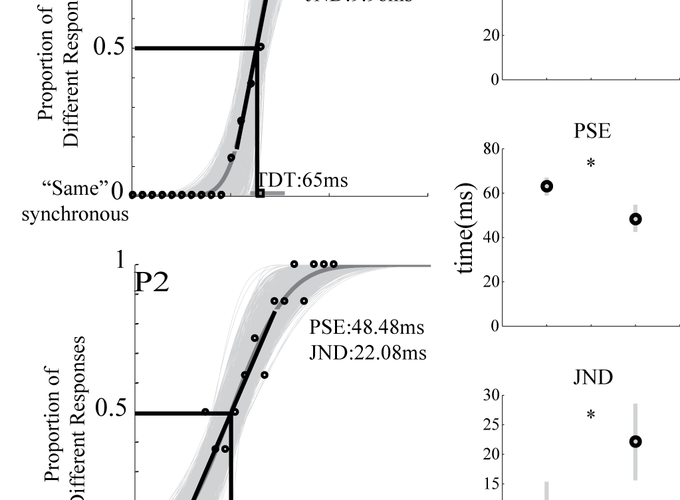Non-parametric bootstrapping method for measuring the temporal discrimination threshold for movement disorders

Non-parametric bootstrapping method for measuring the temporal discrimination threshold for movement disorders
Abstract
Objective. Recent studies have proposed that the temporal discrimination threshold (TDT), the shortest detectable time period between two stimuli, is a possible endophenotype for adult onset idiopathic isolated focal dystonia (AOIFD). Patients with AOIFD, the third most common movement disorder, and their first-degree relatives have been shown to have abnormal visual and tactile TDTs. For this reason it is important to fully characterize each participant’s data. To date the TDT has only been reported as a single value. Approach.Here, we fit individual participant data with a cumulative Gaussian to extract the mean and standard deviation of the distribution. The mean represents the point of subjective equality (PSE), the inter-stimulus interval at which participants are equally likely to respond that two stimuli are one stimulus (synchronous) or two different stimuli (asynchronous). The standard deviation represents the